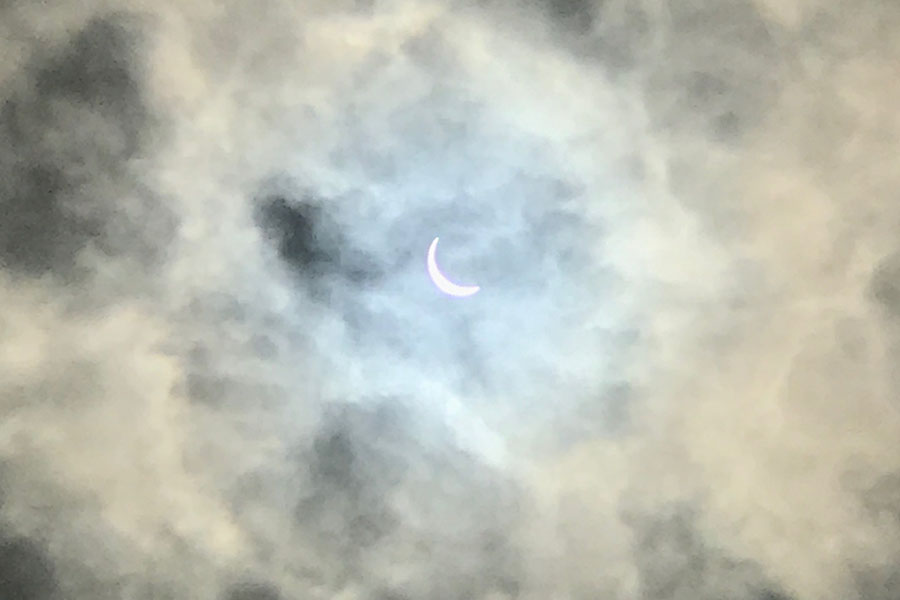Solar Eclipse Darkens Midwest
The total solar eclipse’s path of totality included Kansas City, creating a once-in-a-lifetime experience Aug. 21.
PHOTO | Paige Shankland
The sun is almost completely covered by the moon as totality nears on Aug. 21.
After a concerning start to the day, those in Kansas City, Missouri were able to view a total solar eclipse Monday, Aug. 21.
The morning began with thunderstorms and cloudy weather just hours before the eclipse. The sky cleared up around 10:15 a.m., restoring hope for viewers wanting to see totality. Since Kansas City was on the southern border of the path of totality, some went to other places farther north or east to ensure their spots.
“We drove down to Sibley, Missouri and went to this graveyard that was on top of a hill and had a really great view,” senior Sydney Crawford said. “Sibley is a tiny, tiny town so we knew there wouldn’t be very many people there.”
The path of totality crossed the entirety of the contiguous U.S. from Oregon to South Carolina, going through 14 states. Though not every state had an area in the path of totality, a partial eclipse could be seen from anywhere in North America. In Kansas City, the partial phase began around 11:40 a.m., while the totality began around 1:08 p.m. Totality lasted about 30 seconds, and the moon’s shadow traveled across the U.S. at an approximate speed of 2,000 mph, according to the National Aeronautics and Space Administration’s Eclipse 2017 website.
The longest duration of totality was in Carbondale, Illinois., lasting two minutes and 37 seconds. In all 14 states the path of totality crossed, almost two minutes of darkness fell over the sky. This eclipse was the first one visible in the U.S. since 1979, and the next total solar eclipse in the US is projected to take place Apr. 8, 2024.
“It was a once-in-a-lifetime opportunity and I’m glad all the students had a chance to do it, and I’m glad I had a chance to do it,” social studies teacher Dennis Conaghan said.



